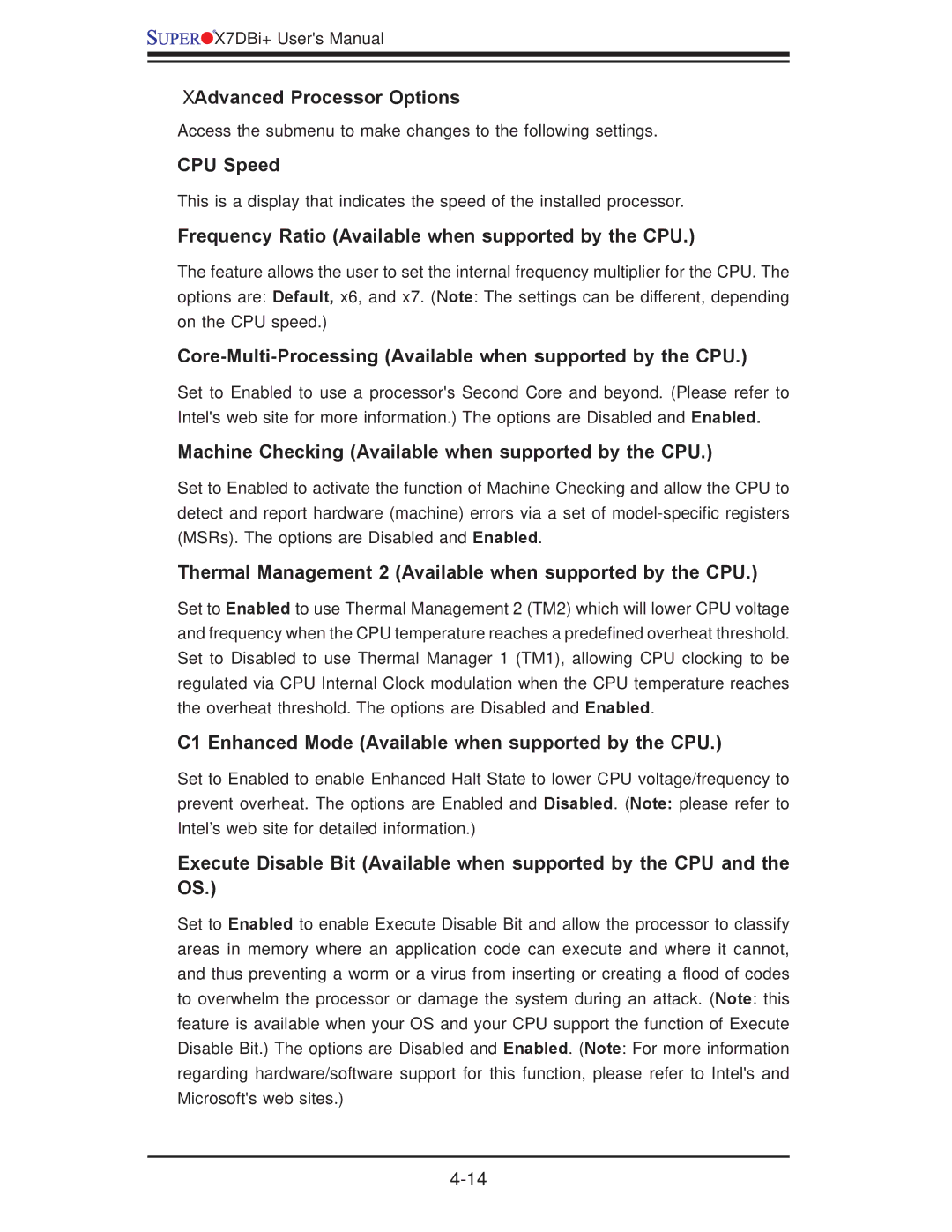
![]()
![]()
![]()
![]() X7DBi+ User's Manual
X7DBi+ User's Manual
Advanced Processor Options
Access the submenu to make changes to the following settings.
CPU Speed
This is a display that indicates the speed of the installed processor.
Frequency Ratio (Available when supported by the CPU.)
The feature allows the user to set the internal frequency multiplier for the CPU. The options are: Default, x6, and x7. (Note: The settings can be different, depending on the CPU speed.)
Core-Multi-Processing (Available when supported by the CPU.)
Set to Enabled to use a processor's Second Core and beyond. (Please refer to Intel's web site for more information.) The options are Disabled and Enabled.
Machine Checking (Available when supported by the CPU.)
Set to Enabled to activate the function of Machine Checking and allow the CPU to detect and report hardware (machine) errors via a set of
Thermal Management 2 (Available when supported by the CPU.)
Set to Enabled to use Thermal Management 2 (TM2) which will lower CPU voltage and frequency when the CPU temperature reaches a predefined overheat threshold. Set to Disabled to use Thermal Manager 1 (TM1), allowing CPU clocking to be regulated via CPU Internal Clock modulation when the CPU temperature reaches the overheat threshold. The options are Disabled and Enabled.
C1 Enhanced Mode (Available when supported by the CPU.)
Set to Enabled to enable Enhanced Halt State to lower CPU voltage/frequency to prevent overheat. The options are Enabled and Disabled. (Note: please refer to Intel’s web site for detailed information.)
Execute Disable Bit (Available when supported by the CPU and the OS.)
Set to Enabled to enable Execute Disable Bit and allow the processor to classify areas in memory where an application code can execute and where it cannot, and thus preventing a worm or a virus from inserting or creating a flood of codes to overwhelm the processor or damage the system during an attack. (Note: this feature is available when your OS and your CPU support the function of Execute Disable Bit.) The options are Disabled and Enabled. (Note: For more information regarding hardware/software support for this function, please refer to Intel's and Microsoft's web sites.)
